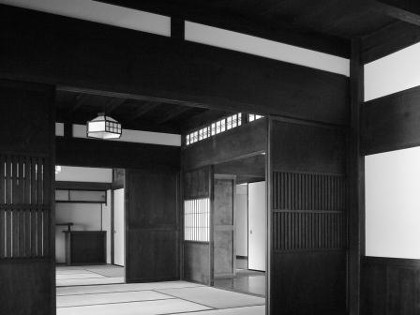
The important component of Japanese residence is Kamoi that is for fitting up such as sliding doors. It is a huge vertical beam, a generic term for a head jamb, unlike the lintel. It is also status symbol of residences, especially big one is called “Sashi-Kamoi”. And it’s look alike Daikoku-Bashira I told in last column.
They put Usu-Kamoi that is thin Kamoi in modern Japanese houses to prevent sagging Kamoi and deteriorating in-built, as suspending middle of it by Tsurizuka.
As well as the origin of Daikoku-Bashira, Sashi-Kamoi gets bigger and sustains the load instead of removed pillars.
Therefore, the rooms of Japanese traditional house were extended. Sashi-Kamoi were specialized in thickness and they need to have both strength as structural components and beauty as millwork.
As a result, the quality of the components is carefully selected and chosen such as Keyaki(Japanese zelkova).
Sashi-Kamoi is called “Sashimono” in certain places. The reason of its naming is because the connecting beam is necessary to put in the pillars rigidly and mortise both ends’ tenons of Sashi-Kamoi into pillars. We say mortising is “Sashikomu”. They have to put pillars together as framework.

Sashi-Kamoi (thick beam)
On the other hands, Usu-Kamoi fits up after finishing up framework and does not have a structural part. In this way, Sashi-Kamoi is completely different from Usu-Kamoi. So it is not postiche components.
If we apply Sashi-Kamoi to modern houses, it could give the impression not only beauty but also tremendous generosity to Japanese residences.
Hironobu FURIHATA

 5F Design Center Building
5F Design Center Building